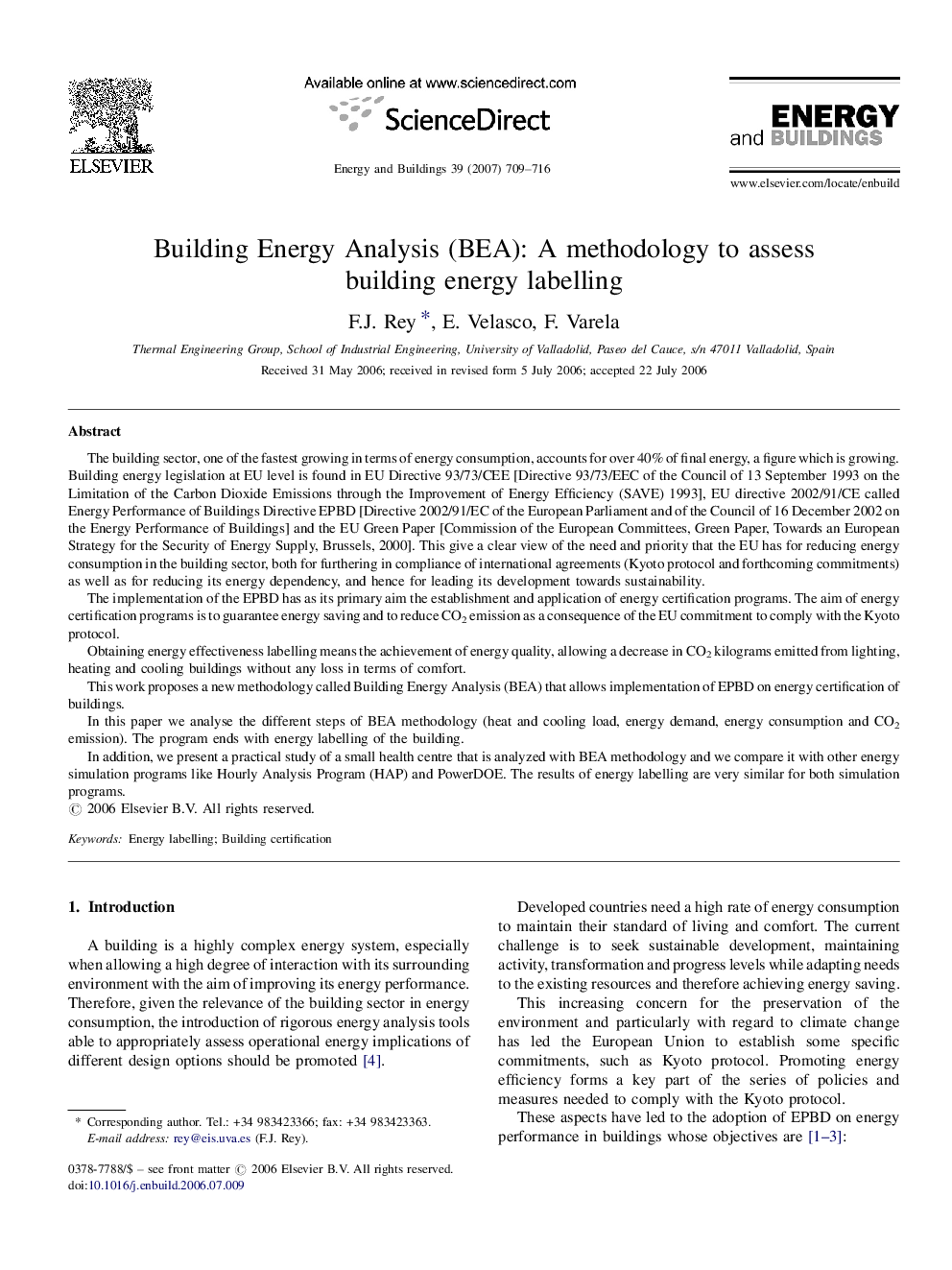| کد مقاله | کد نشریه | سال انتشار | مقاله انگلیسی | نسخه تمام متن |
|---|---|---|---|---|
| 265382 | 504153 | 2007 | 8 صفحه PDF | دانلود رایگان |

The building sector, one of the fastest growing in terms of energy consumption, accounts for over 40% of final energy, a figure which is growing. Building energy legislation at EU level is found in EU Directive 93/73/CEE [Directive 93/73/EEC of the Council of 13 September 1993 on the Limitation of the Carbon Dioxide Emissions through the Improvement of Energy Efficiency (SAVE) 1993], EU directive 2002/91/CE called Energy Performance of Buildings Directive EPBD [Directive 2002/91/EC of the European Parliament and of the Council of 16 December 2002 on the Energy Performance of Buildings] and the EU Green Paper [Commission of the European Committees, Green Paper, Towards an European Strategy for the Security of Energy Supply, Brussels, 2000]. This give a clear view of the need and priority that the EU has for reducing energy consumption in the building sector, both for furthering in compliance of international agreements (Kyoto protocol and forthcoming commitments) as well as for reducing its energy dependency, and hence for leading its development towards sustainability.The implementation of the EPBD has as its primary aim the establishment and application of energy certification programs. The aim of energy certification programs is to guarantee energy saving and to reduce CO2 emission as a consequence of the EU commitment to comply with the Kyoto protocol.Obtaining energy effectiveness labelling means the achievement of energy quality, allowing a decrease in CO2 kilograms emitted from lighting, heating and cooling buildings without any loss in terms of comfort.This work proposes a new methodology called Building Energy Analysis (BEA) that allows implementation of EPBD on energy certification of buildings.In this paper we analyse the different steps of BEA methodology (heat and cooling load, energy demand, energy consumption and CO2 emission). The program ends with energy labelling of the building.In addition, we present a practical study of a small health centre that is analyzed with BEA methodology and we compare it with other energy simulation programs like Hourly Analysis Program (HAP) and PowerDOE. The results of energy labelling are very similar for both simulation programs.
Journal: Energy and Buildings - Volume 39, Issue 6, June 2007, Pages 709–716